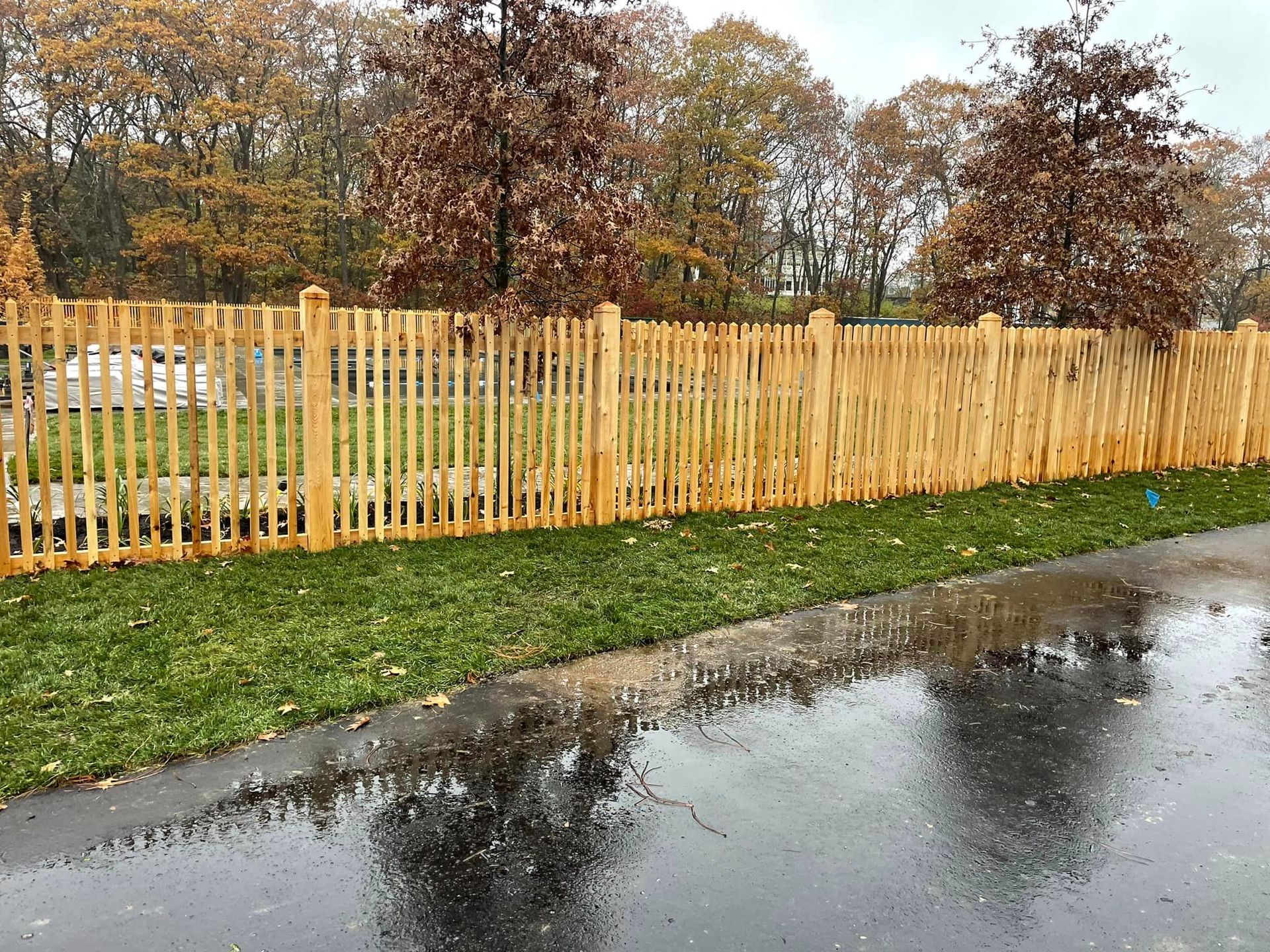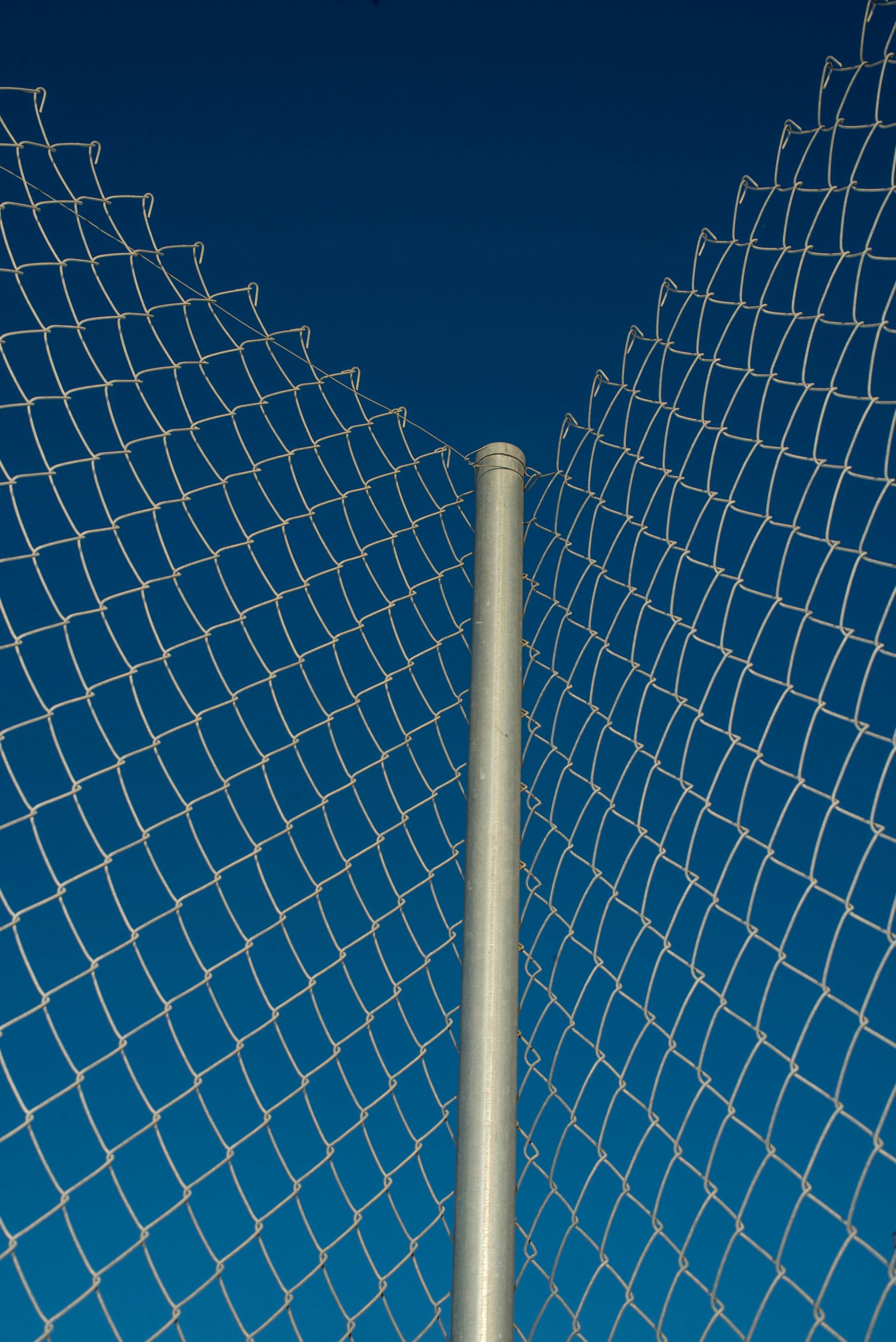Call Us: (207)-415-0219
Top 10 Maintenance Tips for Your Fences

Top 10 Fences' Maintenance Tips
Fences mark property lines, protect your space, and add curb appeal. They deserve regular care to stay in great shape.
Without proper maintenance, fences can break, rot, or rust, leading to expensive repairs or even replacement. But keeping your fence in top condition is easier than you think.
We’ve rounded up 10 simple tips to help you maintain your fence. Whether it’s wood, vinyl, or metal, these steps will extend its life, save you money, and keep it looking great.
For more expert advice, check out our Ultimate Guide to Fence Installation and Repair Services.
Regular Inspection: Spot Issues Early
Inspecting your fence regularly is the first step in keeping it in great shape.
A quick check every few months can help you catch small problems before they turn into big repairs.
How to Inspect Your Fence
- Look for loose boards or panels. Gently push on each section to check for stability.
- Check for signs of damage. Cracks, holes, rust, or rot can weaken your fence over time.
- Inspect fasteners and connections. Screws, nails, or brackets may loosen or rust, compromising the fence's strength.
When to Inspect Your Fence
- After storms or extreme weather to spot damage caused by high winds or debris.
- During seasonal changes, especially in spring and fall, when moisture and temperature shifts can affect materials.
- Anytime you notice leaning, sagging, or unusual wear.
Pro Tip: Use a flashlight to inspect areas near the ground where moisture and pests are more likely to cause damage.
Regular inspections keep your fence strong and save you money by catching issues early.
Cleaning Your Fence: Keep It Looking New
A clean fence not only looks better but also lasts longer.
Dirt, mold, and grime can build up over time, causing damage and reducing your fence's appeal.
How to Clean Your Fence
- Choose the right cleaning method for your fence material:
- Wood fences: Use a soft brush and a mix of water and mild detergent. Avoid harsh chemicals that can strip protective coatings.
- Vinyl fences: Wash with soap and water or a vinyl-safe cleaner. A garden hose with a spray attachment works well for rinsing.
- Metal fences: Remove dirt with a cloth or sponge, and address rust spots with a wire brush before cleaning.
- Rinse thoroughly. Residue from cleaning products can harm your fence over time, so make sure to rinse well with clean water.
- Remove stubborn stains:
- For mold or mildew, use a solution of water and white vinegar.
- For tough stains, a power washer on a low setting can be effective (especially for vinyl).
When to Clean Your Fence
- Clean your fence at least once a year, ideally in spring, to remove winter buildup.
- Spot-clean as needed, especially after heavy rain or storms.
Pro Tip: For wood fences, clean before applying a sealant or stain to ensure better adhesion and a polished finish.
A clean fence not only boosts curb appeal but also prevents long-term damage from dirt, mold, and rust.
Treating Wooden Fences Against Rot and Decay
Wooden fences are beautiful but require extra care to resist rot, decay, and pests.
Protecting your wooden fence keeps it strong, attractive, and long-lasting.
Seal Your Fence Regularly
- Apply a wood sealant or stain every 2–3 years. Sealants repel water, while stains enhance the wood’s natural beauty and provide UV protection.
- Choose the right product for your climate. For areas with heavy rainfall, use a water-repellent stain. In sunny regions, look for UV-resistant options.
Prevent Moisture Damage
- Ensure proper drainage around the fence. Standing water can weaken the wood and lead to rot.
- Keep the bottom of the fence off the ground. Install gravel or a barrier to prevent direct contact with soil.
Protect Against Pests
- Check for signs of termites or carpenter ants. Look for tiny holes, wood shavings, or hollow-sounding boards.
- Treat the wood with a pest-repellent product. Many sealants include additives to deter insects.
Repair Damage Promptly
- Replace any rotting or damaged boards as soon as you notice them.
- Sand and reseal areas with minor cracks or wear to prevent further issues.
Pro Tip: Use pressure-treated wood for new fences or replacements. It’s designed to resist moisture and pests, adding years to your fence’s lifespan.
Taking these steps ensures your wooden fence stays strong and looks its best for years to come.
Preventing and Removing Rust on Metal Fences
Metal fences are durable and low-maintenance, but they can rust over time if not properly cared for.
Preventing rust and addressing it early will keep your fence sturdy and visually appealing.
How to Prevent Rust
- Apply a rust-resistant coating. Use a metal primer or rust-inhibiting paint designed for outdoor use. This creates a barrier against moisture and oxidation.
- Inspect for scratches or chips in the paint. Exposed metal is more likely to rust, so touch up these areas with matching paint.
- Keep the fence clean and dry. Regularly wipe away dirt and water to minimize the chances of corrosion.
How to Remove Rust
- Scrub the rusted areas:
- Use a wire brush or sandpaper to remove loose rust.
- For stubborn rust, apply a rust-removal solution and let it sit for the recommended time.
- Clean and dry the area:
- After removing the rust, wash the area with soap and water.
- Allow it to dry completely before moving to the next step.
- Repaint or reseal:
- Cover the cleaned area with a primer and then a fresh coat of rust-resistant paint.
When to Check for Rust
- Inspect your metal fence every 6 months for early signs of rust, especially in areas exposed to water or near the ground.
- Check more frequently if you live in a humid or coastal area, as salt and moisture accelerate rusting.
Pro Tip: For ornamental metal fences, choose powder-coated options. This finish provides excellent rust protection and requires minimal upkeep.
Regular maintenance prevents rust from spreading and keeps your metal fence strong and stylish.
Tightening Screws and Fixing Loose Panels
Loose screws or wobbly panels can compromise your fence’s stability and safety.
Fixing these small issues quickly prevents bigger problems down the road.
How to Tighten Screws
- Inspect all screws and fasteners. Check hinges, brackets, and other connections for loose or missing hardware.
- Use the right tools:
- A screwdriver or drill for standard screws.
- A wrench for bolts or nuts.
- Replace damaged screws or fasteners:
- Use weather-resistant materials like galvanized or stainless steel to prevent rust.
- Avoid overtightening, as this can crack wooden panels or warp metal ones.
How to Fix Loose Panels
- Check the source of the problem:
- For wood fences, the issue might be a warped board or a loose nail.
- For vinyl or metal fences, it could be a broken clip or connector.
- Secure the panel in place:
- For wooden fences, use deck screws or nails to reattach loose boards.
- For vinyl, replace or tighten brackets and clips.
- For metal, reattach panels with bolts or welding if necessary.
- Reinforce weak areas:
- Add additional brackets or support beams for extra stability.
When to Inspect for Loose Parts
- Check your fence after storms or high winds, which can loosen screws and panels.
- Inspect gates frequently, as they experience more wear and tear from opening and closing.
Pro Tip: Keep a small repair kit handy with screws, brackets, and tools, so you can fix minor issues as soon as they arise.
Tightening screws and securing loose panels helps maintain your fence’s structure and extends its lifespan.
Addressing Fence Post Stability
Fence posts are the backbone of your fence.
If a post becomes loose or wobbly, the entire structure can weaken. Fixing unstable posts quickly ensures your fence stays secure.
How to Check for Stability
- Inspect each post:
- Push gently to see if it wobbles or shifts.
- Look for leaning posts, which often indicate issues with the foundation.
- Examine the base:
- Check for signs of rot, rust, or cracks near the ground.
- Ensure the soil around the post is firm and not eroded.
How to Secure Loose Posts
- Tighten the post in its foundation:
- For wood posts, use braces or replace any loose screws and nails.
- For metal posts, secure the base with bolts or a concrete patch.
- Repack the soil:
- Dig around the post and remove loose dirt.
- Refill the hole with compacted gravel or soil to stabilize the base.
- Reinforce with concrete:
- If the post is severely loose, reset it in concrete.
- Remove the post, dig a deeper hole, and pour fresh concrete before resetting.
When to Inspect Fence Posts
- Check for stability after heavy rainfall, which can soften the soil.
- Inspect during seasonal changes, as freezing and thawing can shift the ground.
Pro Tip: Use pressure-treated wood or galvanized metal posts for new installations. These materials resist moisture and last longer in the ground.
Stabilizing your fence posts protects the entire structure and keeps your fence standing tall.
Managing Vegetation Around Your Fence
Overgrown plants can cause damage to your fence over time.
Keeping vegetation under control helps maintain the integrity of your fence and improves its appearance.
Why Vegetation Matters
- Moisture retention: Plants and vines trap moisture, which can lead to rot or rust, depending on the material.
- Physical damage: Overgrown branches or heavy vines can put pressure on your fence, causing cracks or warping.
- Pest attraction: Dense vegetation provides a hiding spot for insects, which can damage wooden fences.
How to Manage Vegetation
- Trim overhanging branches:
- Cut back tree limbs that could fall or press against your fence.
- Regular pruning prevents branches from scraping or damaging the surface.
- Clear vines and climbing plants:
- Avoid letting ivy or other climbing plants grow on your fence, especially if it’s wood.
- Use garden shears to carefully remove vines without damaging the fence.
- Maintain a clear perimeter:
- Create a buffer zone of at least 1–2 feet around your fence.
- Use mulch or gravel in this area to discourage plant growth and weeds.
- Mow and weed regularly:
- Keep grass and weeds trimmed low near the fence to prevent moisture buildup and reduce pest activity.
When to Maintain Vegetation
- Trim and clear vegetation during spring and fall to prepare for seasonal changes.
- Inspect and manage after storms, when branches and plants may have shifted or grown significantly.
Pro Tip: If you want greenery near your fence, plant shrubs or flowers at a safe distance, choosing non-invasive species that won’t overgrow.
Keeping vegetation in check protects your fence from unnecessary wear and tear, ensuring it stays strong and appealing.
Weatherproofing Your Fence
Harsh weather can take a toll on your fence, whether it’s wood, metal, or vinyl.
Weatherproofing protects your fence from rain, snow, sun, and wind, extending its lifespan.
How to Weatherproof Your Fence
- Apply protective coatings:
- For wood fences: Use a water-repellent sealant or stain to prevent moisture absorption and UV damage.
- For metal fences: Apply a rust-resistant primer and paint to shield against moisture and oxidation.
- For vinyl fences: While naturally weather-resistant, you can add a UV protectant spray to reduce fading.
- Inspect for gaps and cracks:
- Fill cracks in wooden fences with wood filler, then sand and reseal.
- Check for loose connections or gaps in metal or vinyl fences and secure them to prevent wind damage.
- Reinforce against strong winds:
- Install extra support for fence posts, such as braces or deeper footings, especially in wind-prone areas.
- Tighten screws and brackets to prevent panels from detaching during storms.
Seasonal Weatherproofing Tips
- Before winter: Apply a fresh coat of sealant to wood fences and ensure drainage around the base is clear to avoid ice damage.
- Before summer: Add UV protection to prevent fading and cracking caused by intense sunlight.
- After storms: Check for damage and make quick repairs to prevent small issues from getting worse.
Pro Tip: Choose weather-resistant materials when installing a new fence, like pressure-treated wood, powder-coated metal, or UV-stabilized vinyl.
Weatherproofing your fence protects it from the elements, saving you time and money on repairs in the long run.
Repairing Minor Damages Before They Escalate
Small damages to your fence may not seem like a big deal, but ignoring them can lead to costly repairs down the line.
Fixing minor issues as soon as you spot them keeps your fence in good shape and saves you money.
Common Minor Fence Issues and Fixes
- Cracks or Splits in Wood:
- Solution: Fill cracks with wood filler or epoxy. Once dry, sand the area smooth and apply a sealant to protect it from moisture.
- Small Holes in Vinyl Fences:
- Solution: Use a vinyl fence repair kit to patch small holes. These kits typically include matching adhesive and filler.
- Rust Spots on Metal Fences:
- Solution: Remove rust with a wire brush and apply a rust-inhibiting primer followed by paint to prevent it from spreading.
- Loose Boards or Panels:
- Solution: Reattach loose boards with screws or nails. For vinyl or metal panels, tighten or replace brackets and clips.
How to Address Damage Quickly
- Inspect regularly: Look for signs of wear and tear during your routine checks.
- Have tools and materials ready: Keep a small repair kit with screws, nails, wood filler, and paint for quick fixes.
- Act immediately: The sooner you address minor damage, the less likely it will grow into a bigger issue.
When to Repair vs. Replace
- Repair small issues, like cracks, rust, or loose boards, immediately.
- Replace sections or panels when damage is widespread or compromises the structural integrity of the fence.
Pro Tip: If a repair seems beyond your skill or tools, call a professional to handle the job safely and effectively.
Repairing minor damages early prevents further deterioration and keeps your fence looking and performing its best.
Scheduling Professional Maintenance Services
While DIY maintenance is essential,
professional help ensures your fence gets the expert care it needs to last longer. Professionals can catch issues you might overlook and perform repairs or upgrades with precision.
Why Professional Maintenance Matters
- Thorough inspections:
- Experts can identify hidden problems, such as internal rot, underground post damage, or structural weaknesses.
- They assess the overall condition of your fence and recommend proactive measures.
- High-quality repairs:
- Professionals use specialized tools and materials to fix issues permanently.
- They ensure repairs are structurally sound and visually seamless.
- Time-saving convenience:
- Save time by letting professionals handle labor-intensive tasks like post replacements or fence alignment.
When to Call a Professional
- After severe weather: High winds, heavy rain, or snowstorms can cause structural damage that needs expert assessment.
- For extensive damage: If a large section of your fence is damaged, professionals can repair or replace it efficiently.
- During annual maintenance: Schedule a yearly check-up to ensure your fence remains in top shape.
Choosing the Right Service
- Look for licensed and insured companies with a track record of excellent service.
- Ask for a detailed estimate and timeline for the work.
- Read reviews or ask for recommendations to ensure reliability.
Pro Tip: Regular professional maintenance paired with your DIY efforts creates a strong, lasting fence with minimal hassle.
Scheduling professional maintenance not only extends your fence’s lifespan but also saves you from costly repairs in the future.
Conclusion
Taking care of your fence doesn’t have to be overwhelming. Regular inspections, cleaning, and timely repairs can keep your fence looking great and standing strong for years. By following these tips, you’ll prevent common issues like rot, rust, and structural instability, saving both time and money.
While DIY maintenance is crucial, professional services can ensure your fence gets the expert care it deserves. If your fence needs repairs, reinforcement, or a professional touch, Seacoast Fence and Construction is here to help. Our team provides top-notch fence maintenance and repair services, ensuring your fence stays sturdy, beautiful, and secure.
Reach out to Seacoast Fence and Construction today to schedule an inspection or learn more about our services. Your fence deserves the best care, and we’re here to deliver it!
Our Services
Contact Information
Phone:
Address:
642 Elm St Unit 3, Biddeford ME 4005
Business Hours
- Mon - Fri
- -
- Sat - Sun
- Closed
Tips & Articles


